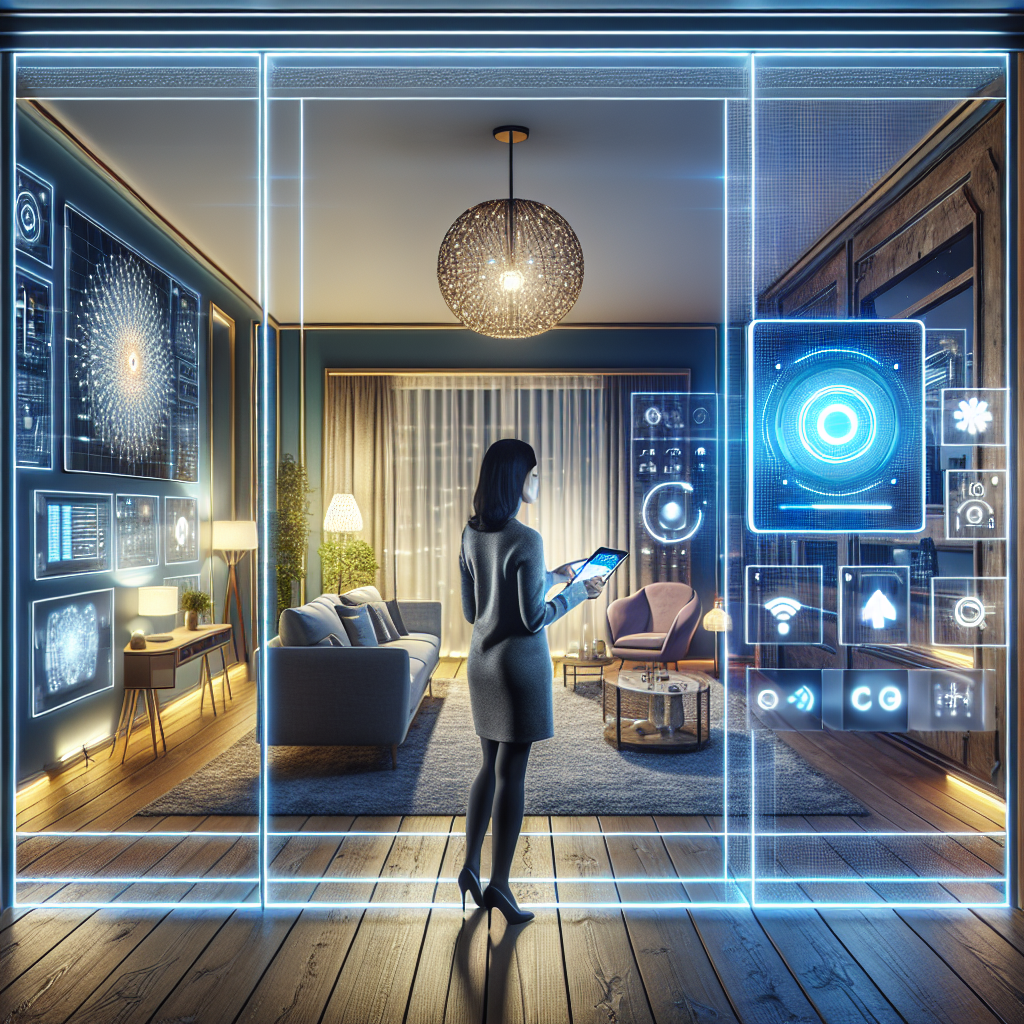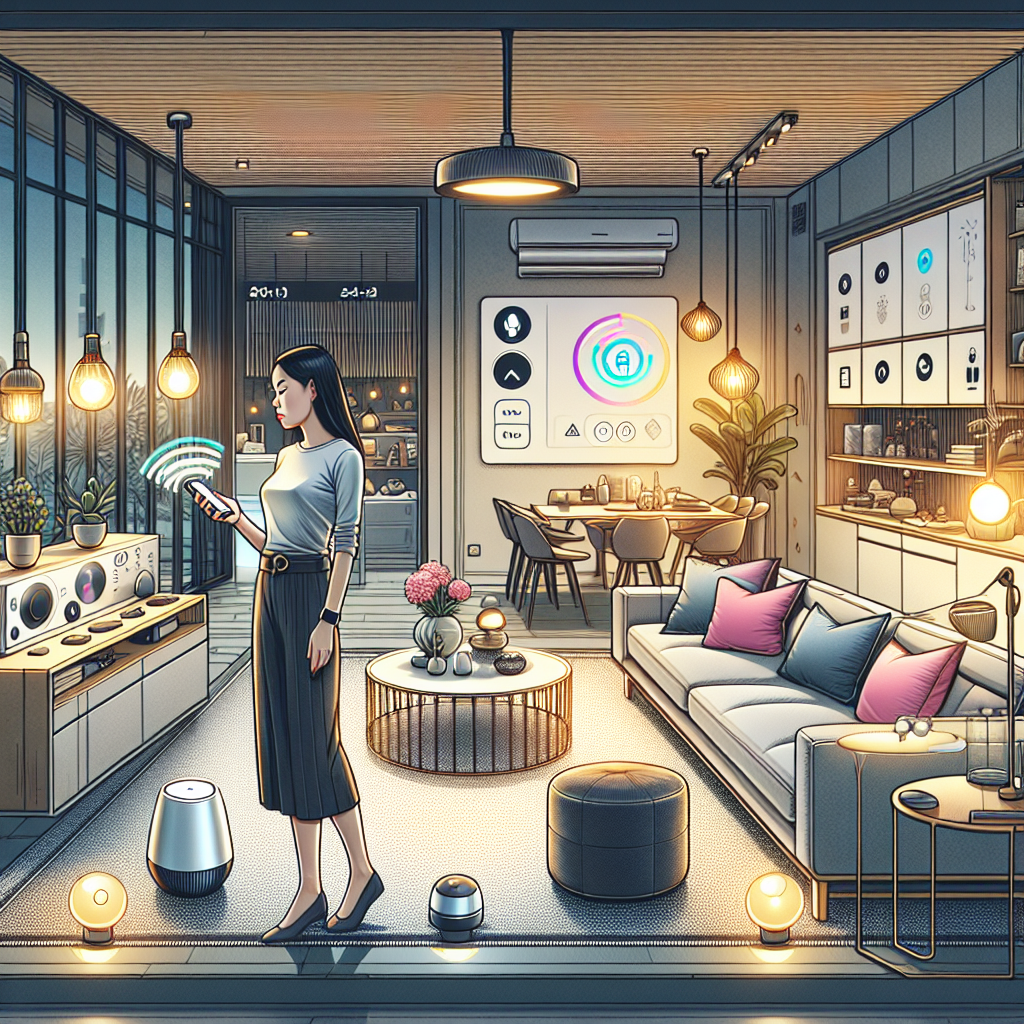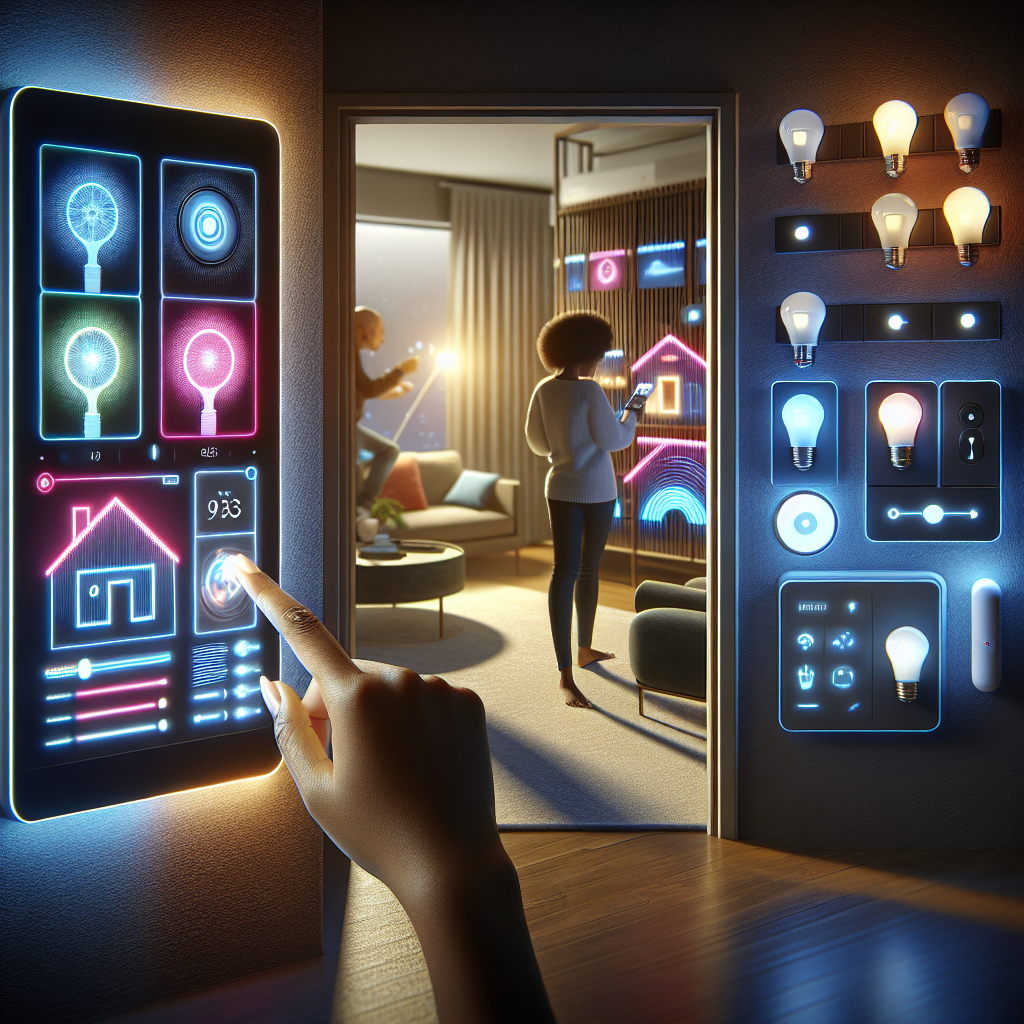In today’s rapidly evolving technological landscape, the concept of home automation lighting control is revolutionizing the way we illuminate our living spaces. Imagine a world where your lights can be adjusted with just a touch of a button or a voice command. With the integration of smart technology, homeowners now have the ability to customize their lighting to suit their mood, enhance ambiance, and maximize energy efficiency. Join us on a journey as we explore the future of home automation lighting control, where convenience and innovation converge to create a truly immersive and dynamic lighting experience. Discover the endless possibilities that await you in the realm of smart lighting solutions.
Understanding the Basics of Home Automation Lighting Control

Definition of Home Automation Lighting Control
Home automation lighting control refers to the technology that allows homeowners to manage and regulate the lighting within their homes through automated systems. This technology enables users to control the brightness, color, and even scheduling of their lights remotely using a smartphone, tablet, or voice commands.
Benefits of Implementing Home Automation Lighting Control
- Energy Efficiency: Home automation lighting control systems can help reduce energy consumption by automatically adjusting the lights based on occupancy or natural light levels.
- Convenience: With automated lighting control, users can easily turn lights on or off without physically flipping a switch, making it convenient for individuals with mobility issues or when hands are full.
- Security: Automated lighting can create the illusion of occupancy when homeowners are away, enhancing home security by deterring potential intruders.
- Customization: Users can personalize their lighting preferences to create different moods or settings for various activities, such as movie nights, parties, or relaxation.
How Home Automation Lighting Control Works
Home automation lighting control systems typically consist of smart light bulbs, switches, sensors, and a central control hub. The smart devices communicate with each other using wireless protocols like Wi-Fi, Zigbee, or Z-Wave. The central hub acts as the brain of the system, receiving commands from the user interface and transmitting them to the appropriate devices to execute the desired lighting settings. Users can program schedules, create scenes, and integrate their lighting control with other smart home devices for a seamless automated experience.
Types of Home Automation Lighting Control Systems
Wired Systems
Wired home automation lighting control systems involve physical connections between the control panel and the light fixtures. These systems typically require professional installation as they necessitate running wires through walls and ceilings to connect the various components. Wired systems offer a robust and reliable method of controlling lighting within a smart home environment.
Pros of Wired Systems:
– Reliability: Wired systems are generally more reliable than wireless alternatives as they are not susceptible to interference from other devices or signal disruptions.
– Security: With physical connections, wired systems are less vulnerable to hacking or unauthorized access compared to wireless systems.
– Consistency: Wired systems provide consistent performance without the fluctuations in signal strength that can occur with wireless connections.
Cons of Wired Systems:
– Installation Complexity: The installation of wired systems can be complex and may require professional assistance, increasing initial setup costs.
– Limited Flexibility: Once installed, changing or expanding a wired system can be challenging and may require additional wiring modifications.
– Potential for Damage: Since wired systems involve physical connections, there is a risk of damage to the wires during installation or maintenance, which could lead to system malfunctions.
Wireless Systems
Types of Home Automation Lighting Control Systems
Description of Wireless Systems
Wireless home automation lighting control systems utilize radio frequency signals to communicate between devices, eliminating the need for complex wiring. These systems typically consist of smart bulbs, switches, and hubs that can be controlled remotely through mobile applications or voice commands. The wireless technology allows for easy installation and flexibility in expanding the system to cover multiple rooms or zones within a house.
Pros and Cons
- Pros
- Flexibility: Wireless systems offer the flexibility to control lighting from anywhere within the house or even remotely.
- Scalability: These systems are easily scalable, allowing users to add more devices or expand the coverage area without significant rewiring.
- Ease of Installation: With no wiring required, installation is often simpler and less invasive compared to traditional wired systems.
- Cons
- Reliability: Wireless systems may be susceptible to interference from other devices or signal range limitations, potentially affecting the reliability of communication.
- Compatibility: Ensuring compatibility between different brands or devices within a wireless system can be a challenge, limiting options for customization.
- Cost: While installation costs may be lower, the initial investment in wireless devices and hubs can be higher than traditional wired systems.
Components of Home Automation Lighting Control Systems
Smart Light Bulbs
- Smart light bulbs are an essential component of home automation lighting control systems, offering a wide range of functionalities such as remote control, scheduling, and dimming capabilities.
- These bulbs can be controlled through a mobile app or voice commands, allowing users to adjust the brightness and color temperature according to their preferences.
- Some smart light bulbs are equipped with built-in sensors that can detect motion or ambient light levels, contributing to energy efficiency and enhanced security within the home.
- Integration with other smart home devices and platforms enables advanced automation scenarios, such as syncing lighting with music or creating custom lighting scenes for different occasions.
Smart Switches and Dimmers
- Smart switches and dimmers provide a convenient way to upgrade existing lighting fixtures without the need for smart bulbs, offering similar functionalities such as remote control and scheduling features.
- These devices can be installed in place of traditional switches, allowing users to control multiple lights or set up lighting zones within a room.
- Dimmer switches enable users to adjust the intensity of the light, creating custom ambiance and saving energy by reducing power consumption.
- Compatibility with voice assistants like Amazon Alexa or Google Assistant enhances the user experience, enabling hands-free control of the lighting system.
Motion Sensors
- Motion sensors play a crucial role in home automation lighting control systems by detecting movement within a specified area and triggering the lights to turn on or off automatically.
- These sensors enhance convenience and energy efficiency by ensuring that lights are only activated when needed, such as when entering a room or passing through a hallway.
- Integration of motion sensors with other smart devices, such as security cameras or door sensors, can further enhance the overall home automation system, providing a seamless and intelligent lighting control experience.
Smart Home Hubs
- Smart home hubs serve as the central control unit for various smart devices within a home automation system, including lighting control components.
- These hubs enable seamless communication between different devices, allowing users to create customized automation routines and scenarios.
- Integration with voice assistants and third-party platforms expands the functionality of smart home hubs, enabling users to control their lighting system remotely or through voice commands.
- Advanced features such as geofencing and multi-user support enhance the overall user experience, making home automation lighting control more intuitive and efficient.

Integration with Smart Home Ecosystem
In the realm of home automation lighting control, the integration with the smart home ecosystem is becoming increasingly sophisticated and seamless. This integration involves the seamless connection of lighting control systems with a wide array of other smart devices and technologies within the home environment.
Connecting Lighting Control with Other Smart Devices
- The future of home automation lighting control envisions a seamless connection with various smart devices such as thermostats, security cameras, motion sensors, and even appliances.
- By integrating lighting control with these devices, homeowners can create customized settings and automation routines that enhance convenience and energy efficiency.
- For example, lighting can be automatically adjusted based on the temperature settings of the thermostat or triggered by motion detected by security cameras.
Voice Control Options
- Voice control is emerging as a popular and convenient option for managing home automation systems, including lighting control.
- Leading voice assistants like Amazon Alexa, Google Assistant, and Apple Siri are increasingly compatible with lighting control systems, allowing users to adjust lighting settings using voice commands.
- This hands-free control option offers users a convenient and intuitive way to interact with their home lighting, enhancing the overall user experience.
Mobile App Integration
- Mobile app integration is a key feature of the future of home automation lighting control, offering users the flexibility to manage their lighting systems remotely.
- Through dedicated mobile apps provided by lighting control manufacturers, users can adjust lighting settings, create schedules, and monitor energy consumption from anywhere with an internet connection.

- The integration of lighting control with mobile apps not only enhances convenience but also enables users to stay connected and in control of their home lighting even when they are away from home.
DIY Installation and Setup of Home Automation Lighting Control
Setting up a basic lighting control system at home can be a rewarding DIY project that enhances convenience and energy efficiency. Here are the steps to guide you through the installation process:
Steps for Setting Up a Basic Lighting Control System
- Assess Your Lighting Needs: Begin by evaluating the areas in your home where you want to implement automation. Identify high-traffic zones, rooms where lighting control can improve ambiance, and areas where energy savings are a priority.
- Choose the Right Technology: Select a suitable lighting control technology based on your preferences and budget. Options include Wi-Fi-enabled smart bulbs, smart switches, or a centralized lighting control system that integrates with other smart home devices.
- Plan the Layout: Create a lighting plan that outlines which fixtures or switches will be automated. Consider factors such as dimming capabilities, color temperature control, and scheduling features for optimal customization.
- Install the Hardware: Follow manufacturer instructions to install smart bulbs, switches, or controllers in your chosen locations. Ensure all connections are secure and compatible with your existing wiring setup.
- Configure the System: Download the corresponding mobile app or software for your lighting control system. Connect the devices to your home network and follow the setup wizard to sync them with the central hub or gateway.
- Personalize Settings: Customize lighting scenes, schedules, and automation rules to suit your lifestyle. Experiment with features like voice control, motion sensors, or geofencing for added convenience and efficiency.
Tips for Troubleshooting Common Issues
- Check Connectivity: Verify that all devices are properly connected to the network and receiving signals from the control hub. Weak Wi-Fi signals or interference can disrupt communication between components.
- Update Firmware: Regularly update the firmware of your lighting control system to ensure compatibility with new devices and address software bugs. Check for firmware updates through the manufacturer’s app or website.
- Reset Devices: If individual lights or switches are not responding, try resetting them according to the manufacturer’s instructions. This can resolve connectivity issues or restore default settings.
Safety Precautions to Consider
- Turn Off Power: Before installing or troubleshooting any lighting control devices, turn off the power supply at the circuit breaker to prevent electrical accidents.
- Follow Instructions: Adhere to the installation guidelines provided by the manufacturer to avoid damaging the equipment or compromising safety standards.
- Seek Professional Help: If you encounter complex issues or are unsure about wiring practices, consult a qualified electrician for assistance. Safety should always be a top priority when working with home automation lighting control systems.
Advanced Features and Future Trends in Home Automation Lighting Control
Customized Lighting Scenes
In the future of home automation lighting control, customized lighting scenes are expected to become even more sophisticated and personalized. Homeowners will have the ability to create unique lighting presets for various activities, moods, and occasions. This could include setting different color temperatures, brightness levels, and even dynamic lighting effects that adjust throughout the day to enhance productivity, relaxation, or ambiance.
Circadian Rhythm Lighting
One of the most exciting advancements in home automation lighting control is the integration of circadian rhythm lighting. This feature mimics the natural progression of light throughout the day, helping to regulate the body’s internal clock and improve overall well-being. In the future, circadian rhythm lighting systems will be able to automatically adjust the color temperature and intensity of light based on the time of day, promoting better sleep patterns, increased energy levels, and enhanced mood.
Energy Efficiency Measures and Cost Savings
As sustainability and energy efficiency continue to be key priorities, future home automation lighting control systems will focus on reducing power consumption and optimizing energy usage. Smart lighting solutions will incorporate advanced sensors and algorithms to intelligently manage lighting levels based on occupancy, natural light availability, and user preferences. This not only reduces electricity bills but also minimizes environmental impact by conserving energy resources.
Integration with Artificial Intelligence and Machine Learning
The integration of artificial intelligence (AI) and machine learning technologies will revolutionize the future of home automation lighting control. AI algorithms will analyze user behavior, environmental data, and historical usage patterns to automatically adjust lighting settings for optimal comfort and efficiency. Machine learning capabilities will enable lighting systems to continuously improve and adapt to the unique needs and preferences of each household, creating a truly personalized and seamless lighting experience.
FAQs for Exploring the Future of Home Automation Lighting Control
What is home automation lighting control?
Home automation lighting control allows homeowners to remotely control and customize the lighting in their home through the use of smart devices such as smartphones, tablets, or voice assistants. This technology enables users to adjust the brightness, color, and scheduling of their lights from anywhere, creating a more convenient and energy-efficient way to light their homes.
How does home automation lighting control work?
Home automation lighting control typically involves the installation of smart light bulbs, switches, or dimmers that can be connected to a central hub or controlled individually through a mobile app. Users can create personalized lighting scenes, set schedules, and even automate their lights to turn on or off based on certain triggers, such as motion detection or sunrise/sunset times.
What are the benefits of home automation lighting control?
Home automation lighting control offers several benefits, including increased energy efficiency, enhanced security, and improved convenience. Users can reduce their energy consumption by dimming or turning off lights when not in use, while also creating the appearance of someone being home to deter potential intruders. Additionally, the ability to customize lighting scenes can help set the mood for different activities or events, making it a more enjoyable and immersive experience for homeowners.
Is home automation lighting control safe and secure?
Most home automation lighting control systems are designed with built-in security features, such as encrypted communication and authentication protocols, to protect against unauthorized access. Users can also take additional steps to enhance the security of their smart lighting devices, such as using strong passwords, keeping software up to date, and monitoring network activity for any suspicious behavior. By following best practices and precautions, homeowners can enjoy the benefits of home automation lighting control without compromising their safety and privacy.